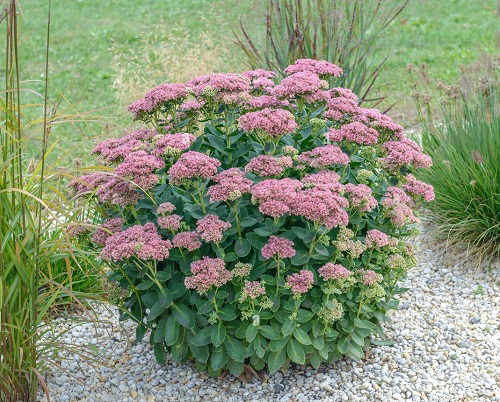Can’t bear to see your garden go barren in the chilly parts of the year? Check Succulents for Fall and Winter Color to rescue your space from dullness!
Succulents are unique, low-maintenance plants that can grow in the harshest of conditions. But along with these structural characteristics, do they also catch the eye with intriguing colors? Yes! There are Succulents for Fall and Winter Colors that display their artistic touch even in the second half of the year!
8 Beautiful Succulents for Fall and Winter Color
1. Christmas Carol Aloe
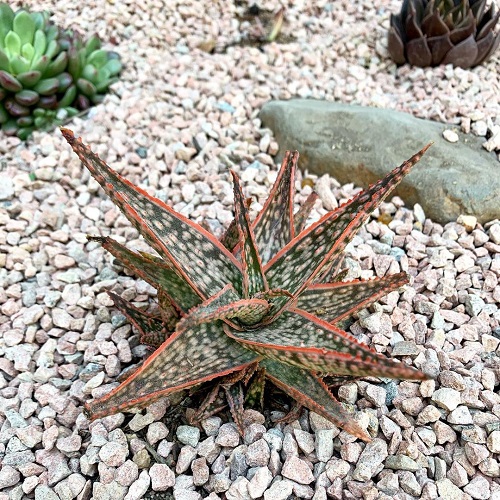
Botanical Name: Aloe ‘Christmas Carol’
Having colorful leaves is one thing, but having both colorful leaves and flowers, especially during the fall and winter seasons, is a deal that no plant lover can refuse!
The Christmas carol is a class apart from other aloes as it does not have the same light green color. In fact, it has fleshy, narrow, thick leaves that are dark green to magenta, but their bright red edges are the most artistic feature.
The plant also produces reddish-pink to orange flowers that grow on a tall spike from late fall to early winter!
A south-facing window sill will be the best location for this plant in your home. It also requires a regular succulent potting mix like any other aloe.
2. String of Rubies
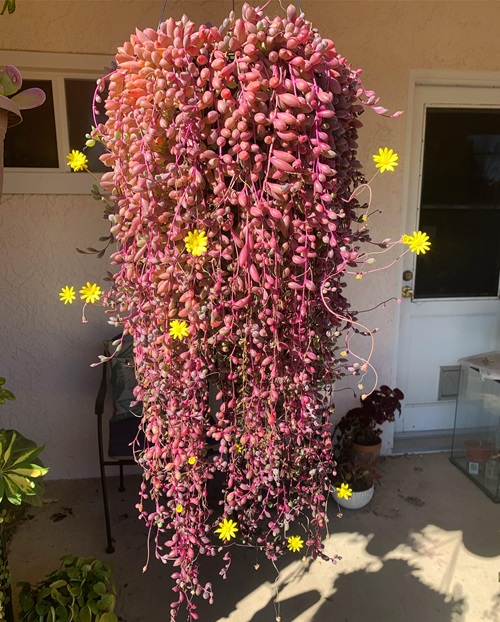
Botanical Name: Othonna capensis
Also known as the ruby necklace, the String of Rubies has trailing tender stems that are ruby-red. The stems bear fleshy bean-like leaves with a color-changing trait.
They turn magenta or purple when exposed to slightly stressful conditions like full bright sun or cool temperatures.
The color of its foliage persists throughout the year, and along with that, it also produces pretty, yellow daisy-like flowers by early fall. It can be a perfect addition for your hanging baskets!
3. Pencil Cactus
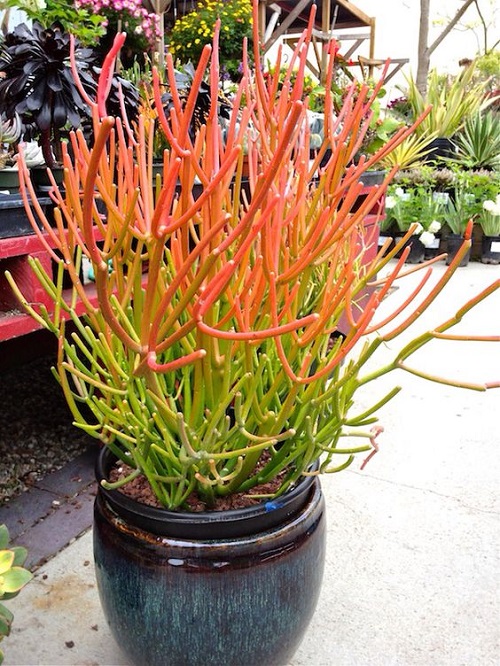
Botanical Name: Euphorbia tirucalli
The pencil cactus is also called “Sticks on Fire” as it has multiple finger-like branches that are originally green but, when exposed to full sun for extended periods of time, turn bright red or orange.
Like most others on this list, the pencil cactus also produces blooms during the chilly months, but these yellow flowers are often overlooked due to their tiny size. The unique leaves are what make them most sought-after.
Note: The sap of the Pencil Cactus is toxic due to the presence of Diterpene esters, which can cause skin irritation and optical issues, so handle it with care!
4. Blue Chalk Finger

Botanical Name: Curio repens
The Blue Chalk Finger stands out with its cool blue leaves that resemble tiny fingers. The exciting part is that it maintains its color all year long, even in fall and winter.
This succulent is a member of the daisy family and grows low to the ground. It also produces small, creamy-white flowers in late summer to early fall that perfectly contrast its attractive foliage.
If you choose to grow it indoors, keep it in a place where bright sunlight falls upon it and provide it with a well-drained succulent potting medium. It can also be grown in partial shade, but high temperatures and shade can make the plant leggy and less attractive.
5. Flapjack Plant
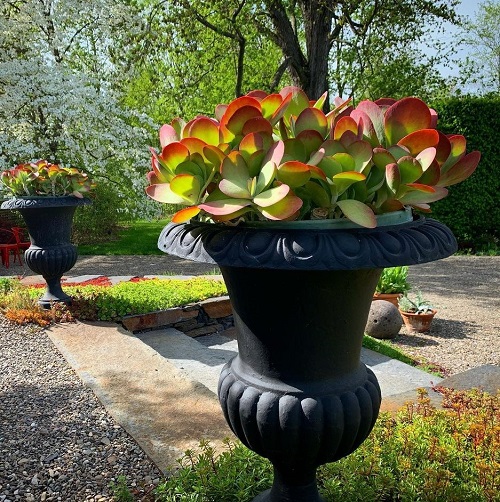
Botanical Name: Kalanchoe luciae
Flapjack plant, or paddle plant, has multiple variants, each more stunning than the last. It has large, flat, paddle-shaped leaves that are slender at the base of the rosette and spread and curl at the top. Most cultivars, like Kalanchoe luciae ‘Oricula,’ are bright green with red edges.
It does well in full sun to partial shade, but cooler temperatures enhance the burgundy color. This succulent requires very little water to thrive.
6. Black Rose Aeonium
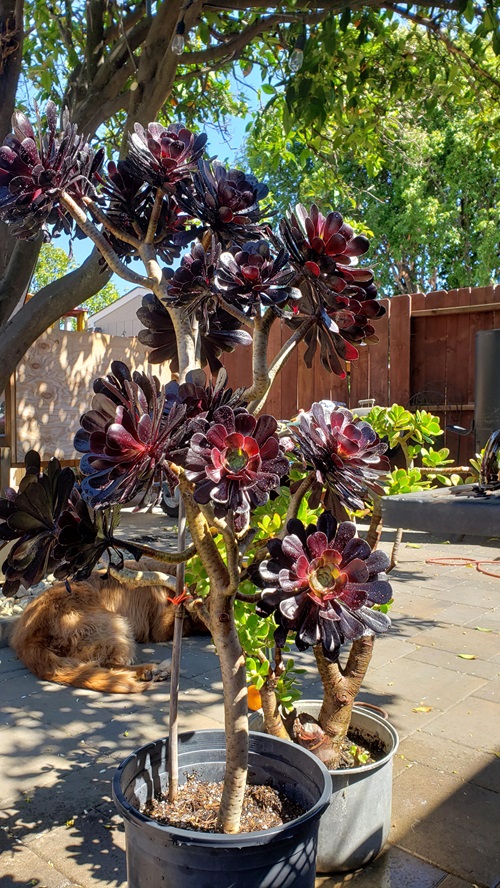
Botanical Name: Aeonium arboreum ‘Zwartkop’
This eye-catching succulent has a gothic appeal due to its gloomy yet bold colors, even during the colder months. The dark purple, almost black rosettes resemble roses on tall, slender stems, hence the name.
Unlike most succulents, this plant prefers cool weather and does NOT like high temperatures but prefers a mix of direct and indirect sunlight for the darker leaves.
7. California Sunset
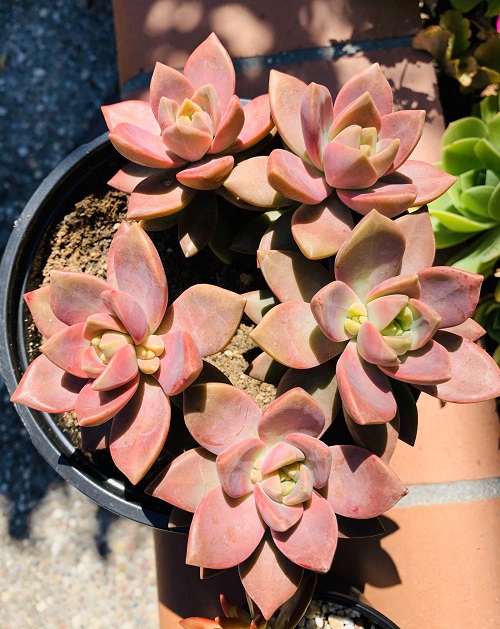
Botanical Name: Graptosedum ‘California Sunset’
Hollywood is said to have one of the most beautiful sunsets, and this succulent perfectly mimics them! The California Sunset has rosettes that change color from light green to shades of pink, orange, and yellow, depending on the amount of sunlight and water.
This plant was not naturally obtained but was a manmade hybrid between Graptopetalum paraguayensis and Sedum adolphi.
8. Autumn Joy
Botanical Name: Hylotelephium ‘Herbstfreude’ Autumn Joy
Autumn Joy is a member of the Crassulaceae family, and it spreads colors to your garden, especially in the fall! You can easily grow it outdoors as it is very frost tolerant!
It has large, flat clusters of pink flowers that bloom during the fall season over the thick, fleshy leaves, which turn reddish-brown in colder weather. The flowers attract butterflies.
This succulent can survive in multiple soil conditions, including infertile, gravel soil. However, it loves the sun and dislikes frequent watering.


